Trees Birds Mammals Fish Amphibians Reptiles
Wild Algarve
Bookshop
Cortinarius alboviolaceus (Pers.) Fr. - Pearly Webcap
Phylum: Basidiomycota - Class: Agaricomycetes - Order: Agaricales - Family: Cortinariaceae
Distribution - Taxonomic History - Etymology - Toxicity - Identification - Reference Sources
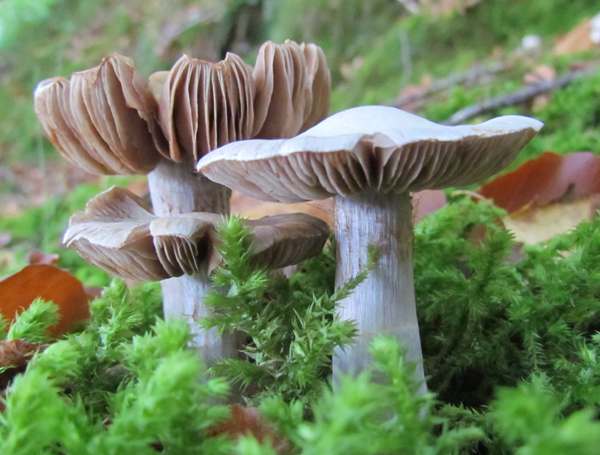
Cortinarius alboviolaceus, the Pearly Webcap, is found in summer and
autumn mainly in beech woods but also occasionally under conifers. The
pale lilac or mauve tinted cap is quite distinctive.
The genus Cortinarius is sometimes subdivided, and the Pearly Webcap is a very typical member of the subgenus Sericeocybe, meaning 'silky head'. The silky lilac-flushed cap is paler towards the centre making this species very distinctive, unlike most webcaps.
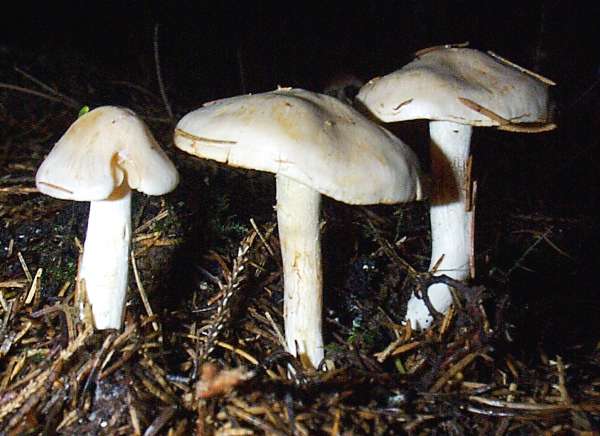
Distribution
An occasional species in Britain, most often reported from Scotland, the Pearly Webcap is found also throughout much of mainland Europe and is reported from many parts of North America.
Taxonomic history
When in 1801 Christiaan Hendrik Persoon described this webcap he gave it the name Agaricus alboviolaceus. (Vast numbers of gilled fungi were dumped into the Agaricus genus in the early days of fungal taxonomy; most have since been moved to other genera leaving in the present-day Agaricus genus a much smaller number of gilled mushrooms that are sometimes referred to as the 'true mushrooms'.) It was the great Swedish mycologist Elias Magnus Fries who, in 1838, transferred this species to the genus Cortinarius, whereupon it acquired its currently-accepted scientific name Cortinarius alboviolaceus.
Agaricus alboviolaceus Pers., is thus a synonym of Cortinarius alboviolaceus.
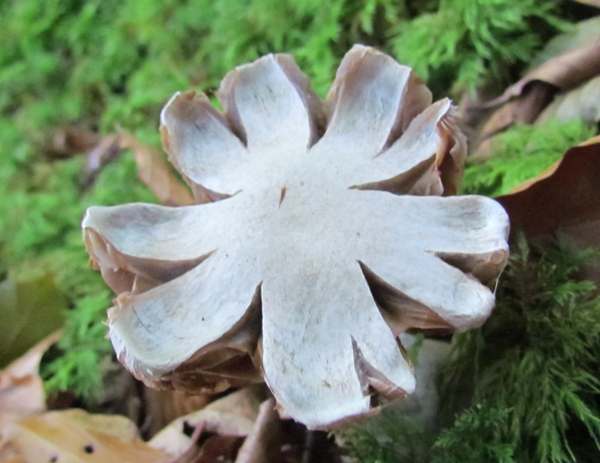
Etymology
The generic name Cortinarius is a reference to the partial veil or cortina (meaning a curtain) that covers the gills when caps are immature. In the genus Cortinarius most species produce partial veils in the form of a fine web of radial fibres connecting the stem to the rim of the cap rather than a solid membrane.
The specific epithet alboviolaceus come from the prefix albo- meaning white and violaceus indicating that it is tinted or flushed with violet. Perfectly appropriate!
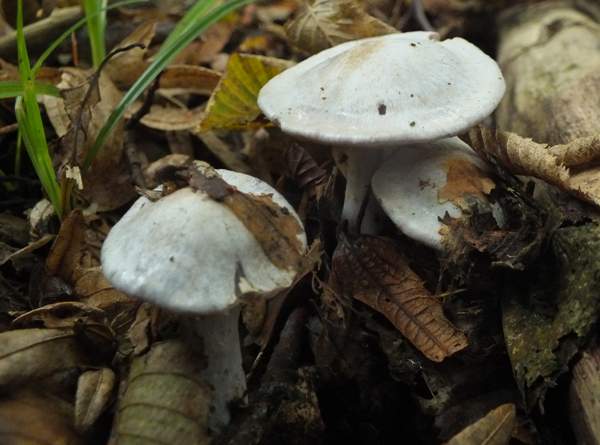
Toxicity
This mushroom is generally regarded as inedible or suspect and we recommend that it should not be gathered for eating. Some Cortinarius species contain the toxin orellanine, which if eaten destroys human kidneys and liver.
In prolonged dry weather, cap margins of the Pearly Webcap tend to split, producing starry displays like the example pictured above; such patterns are more commonly associated with the Torn Fibrecap Inocybe rimosa (synonym Inocybe fastigiata).
Identification guide
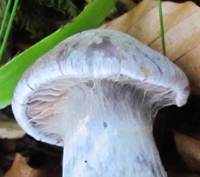 |
Cap
At first domed and then shallowly convex with a broad umbo, the dry,
silky caps
vary in colour from almost white through pale lilac to pale mauve.
Cap diameter varies from 3 to 9cm at maturity. |
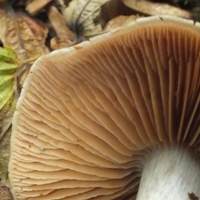 |
Gills
The notched gills are violaceous at first. As the spores mature, the gills turn
clay brown and
eventually they are stained rust brown by the spores. |
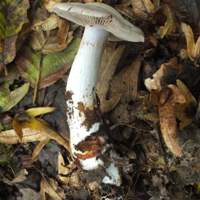 |
Stem
The stipe, which is often bowed rather than straight, is pale and fibrous with a slightly clavate (club-shaped) base.
Typically 6 to 15mm in diameter the stems are usually 8 to 12
cm tall.
The remains of the white cortina that adhere to the stem are soon marked
by a reddish-brown stain from falling spores. |
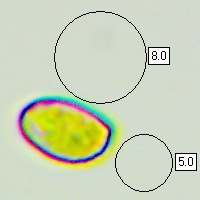 |
Spores
Broadly ellipsoidal, 7.5-9 x 4.5-6µm; with fine warty ornamentation; inamyloid.
Spore print
Rusty brown. |
Odour/taste |
Not strong, but detectable odour and taste of
radish. |
Habitat & Ecological role |
Under beech and less frequently other hardwood
trees, often in areas where the soil is acidic; occasionally also under conifers. |
Season |
July to November in Britain and Ireland. |
Reference Sources
Fascinated by Fungi, 2nd Edition, Pat O'Reilly 2016, reprinted by Coch-y-bonddu Books in 2022.
Funga Nordica, Henning Knudsen and Jan Vesterholt, 2008.
Fungi of Switzerland Agarics, part 3: Cortinariaceae, Breitenbach, J., Kränzlin, F.
Dictionary of the Fungi; Paul M. Kirk, Paul F. Cannon, David W. Minter and J. A. Stalpers; CABI, 2008
Taxonomic history and synonym information on these pages is drawn from many sources but in particular from the British Mycological Society's GB Checklist of Fungi.
Top of page...
Fascinated by Fungi. Back by popular demand, Pat O'Reilly's best-selling 450-page hardback book is available now. The latest second edition was republished with a sparkling new cover design in September 2022 by Coch-y-Bonddu Books. Full details and copies are available from the publisher's online bookshop...